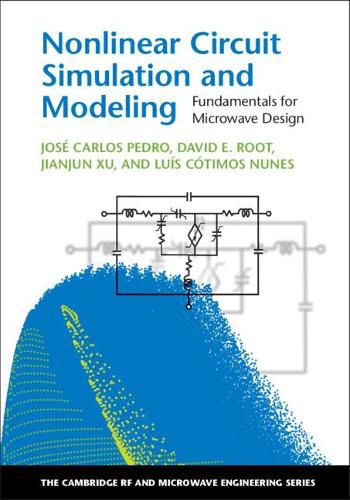Readings Newsletter
Become a Readings Member to make your shopping experience even easier.
Sign in or sign up for free!
You’re not far away from qualifying for FREE standard shipping within Australia
You’ve qualified for FREE standard shipping within Australia
The cart is loading…






Discover the nonlinear methods and tools needed to design real-world microwave circuits with this tutorial guide. Balancing theoretical background with practical tools and applications, it covers everything from the basic properties of nonlinear systems such as gain compression, intermodulation and harmonic distortion, to nonlinear circuit analysis and simulation algorithms, and state-of-the-art equivalent circuit and behavioral modeling techniques. Model formulations discussed in detail include time-domain transistor compact models and frequency-domain linear and nonlinear scattering models. Learn how to apply these tools to designing real circuits with the help of a power amplifier design example, which covers all stages from active device model extraction and the selection of bias and terminations, through to performance verification. Realistic examples, illustrative insights and clearly conveyed mathematical formalism make this an essential learning aid for both professionals working in microwave and RF engineering and graduate students looking for a hands-on guide to microwave circuit design.
$9.00 standard shipping within Australia
FREE standard shipping within Australia for orders over $100.00
Express & International shipping calculated at checkout
Discover the nonlinear methods and tools needed to design real-world microwave circuits with this tutorial guide. Balancing theoretical background with practical tools and applications, it covers everything from the basic properties of nonlinear systems such as gain compression, intermodulation and harmonic distortion, to nonlinear circuit analysis and simulation algorithms, and state-of-the-art equivalent circuit and behavioral modeling techniques. Model formulations discussed in detail include time-domain transistor compact models and frequency-domain linear and nonlinear scattering models. Learn how to apply these tools to designing real circuits with the help of a power amplifier design example, which covers all stages from active device model extraction and the selection of bias and terminations, through to performance verification. Realistic examples, illustrative insights and clearly conveyed mathematical formalism make this an essential learning aid for both professionals working in microwave and RF engineering and graduate students looking for a hands-on guide to microwave circuit design.